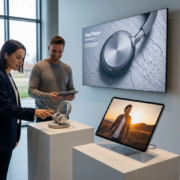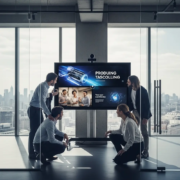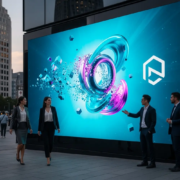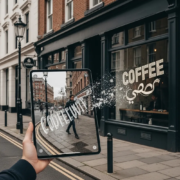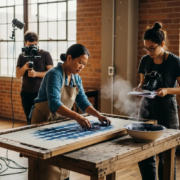Best Practices for Local SEO in Dubai
Best Practices for Local SEO in Dubai
In the bustling, hyper-competitive landscape of Dubai, where businesses emerge and evolve at a rapid pace, merely having an online presence is no longer sufficient. To truly stand out and connect with your target audience, a robust and targeted digital strategy is paramount. For businesses aiming to capture the local market, understanding and implementing the Best Practices for Local SEO in Dubai is not just an advantage—it’s a necessity. Local SEO focuses on optimizing your online presence to attract more business from local searches. Whether you’re a restaurant in Jumeirah, a salon in Business Bay, or a real estate agent covering Downtown Dubai, mastering local search engine optimization can be the key to sustainable growth and increased visibility in this dynamic emirate. This comprehensive guide will walk you through the essential steps and nuanced strategies required to dominate local search results in Dubai.
Understanding the Dubai Market for Local SEO
Dubai is a unique market with a diverse population, varying consumer behaviors, and a blend of cultures. These factors significantly influence how local SEO strategies should be designed and executed. Unlike many other global cities, Dubai has a large expatriate population, leading to a complex mix of search queries in multiple languages, predominantly English and Arabic. Furthermore, the city’s geographical layout, with distinct neighborhoods and business hubs, means that location-specific targeting is even more critical. Businesses must consider both tourists and residents, as well as the varying purchasing power and preferences across different areas.
The Significance of Location-Based Searches
In Dubai, “near me” searches are incredibly prevalent. People are constantly looking for services, shops, and experiences in their immediate vicinity, whether they are in the Marina, Al Barsha, or Deira. Optimizing for these micro-moments is fundamental. Search engines prioritize local results when users express a local intent, making it crucial for your business to appear prominently in those localized listings. The convenience of finding a nearby solution often trumps other factors, highlighting why a focused local SEO strategy can yield significant returns.
Google Business Profile: Your Local SEO Cornerstone
If there’s one single element that underpins all Best Practices for Local SEO in Dubai, it’s a meticulously optimized Google Business Profile (GBP). Formerly known as Google My Business, this free tool from Google is your storefront on Google Search and Maps. For businesses targeting local customers in Dubai, a strong GBP is non-negotiable.
Complete and Accurate Information
The foundation of an effective GBP is accurate and comprehensive information. Ensure your business name, address, phone number (NAP), and website URL are perfectly consistent with your other online listings. Inaccurate or conflicting information can confuse both potential customers and search engines. Verify your business through Google’s process as soon as possible, typically via postcard or phone, to unlock full functionality.
Optimizing Key GBP Sections:
- Business Categories: Choose the most specific and relevant primary category for your business. Add secondary categories to broaden your reach without being misleading.
- Service Areas: Clearly define the specific neighborhoods or districts in Dubai you serve. This is crucial for service-based businesses that don’t operate from a single physical location.
- Business Hours: Keep these updated, especially during public holidays or special events in Dubai.
- Photos and Videos: High-quality images of your storefront, interiors, products, and team can significantly boost engagement. Businesses with photos receive more requests for directions and website clicks. Showcase the best of your Dubai location.
- Products/Services: Detail your offerings. This helps Google understand exactly what you do and match you with relevant search queries.
- Google Posts: Use this feature to share updates, offers, events, or news. Posts can drive engagement and keep your profile fresh.
- Q&A Section: Monitor and answer questions posed by users. You can also proactively add frequently asked questions and answers.
NAP Consistency and Local Citations
Consistency is key in local SEO. Your Name, Address, and Phone number (NAP) must be identical across all online platforms. Discrepancies, even minor ones, can erode Google’s trust in your business information, negatively impacting your local search rankings. This practice is one of the foundational Best Practices for Local SEO in Dubai.
Building Local Citations
Citations are mentions of your business NAP on other websites, such as online directories, social media platforms, and review sites. High-quality, relevant citations signal to Google that your business is legitimate and active in the local community. For Dubai, consider local directories specific to the UAE or regional listings. Examples include:
- Yellow Pages UAE
- Dubizzle
- Local business association websites
- Industry-specific directories (e.g., Zomato for restaurants, Property Finder for real estate)
Actively seek out opportunities to list your business on these platforms, ensuring every entry has the exact same NAP details as your Google Business Profile and website.
Local Keyword Research for the Dubai Market
Effective keyword research is the compass for any SEO strategy, and local SEO in Dubai is no exception. It involves identifying the terms and phrases your target customers are using when searching for your products or services locally.
Embracing Multilingual and Location-Specific Keywords
Given Dubai’s diverse demographic, your keyword strategy should account for both English and Arabic searches. While English is widely used, targeting relevant Arabic keywords can open up a significant portion of the market. Furthermore, incorporate specific Dubai neighborhoods and landmarks into your keyword strategy. Instead of just “pizza delivery,” think “pizza delivery JLT,” “pizza near Burj Khalifa,” or “best pizza Deira.”
Tools and Techniques:
- Google Keyword Planner: Use this to find keyword ideas and search volumes, filtering by location (Dubai, UAE).
- Google Search Console: Monitor actual search queries that bring users to your site.
- Competitor Analysis: See what keywords your local competitors are ranking for.
- Google Autocomplete and “People Also Ask”: These features provide insights into common search patterns and related questions.
On-Page SEO for Local Relevance
Your website itself plays a pivotal role in local SEO. Optimizing your website’s content and technical elements is another crucial aspect of the Best Practices for Local SEO in Dubai.
Location-Specific Content
Create dedicated service or location pages if you serve multiple areas within Dubai. For instance, a cleaning service might have separate pages for “Cleaning Services Downtown Dubai,” “Cleaning Services Dubai Marina,” etc. Each page should feature unique, high-quality content that integrates local keywords naturally.
Key On-Page Elements to Optimize:
- Title Tags and Meta Descriptions: Include your primary target keyword and location (e.g., “Best Italian Restaurant in Jumeirah – [Your Restaurant Name]”).
- Header Tags (H1, H2, H3): Use these to structure your content and include local keywords.
- Body Content: Naturally weave in local keywords, landmarks, and address details.
- Image Alt Text: Describe your images using relevant keywords and location information.
- Schema Markup (Structured Data): Implement LocalBusiness schema markup on your website. This tells search engines specific details about your business, such as NAP, hours, reviews, and services, in a format they can easily understand. This significantly boosts your visibility in local search results and rich snippets.
- Mobile-Friendliness and Page Speed: With a significant portion of local searches happening on mobile devices, your website must be responsive and load quickly. Google prioritizes mobile-first indexing, making this an essential technical SEO factor.
For expert guidance on implementing these sophisticated on-page SEO strategies, consider partnering with a specialized firm. Artsun advertising agency offers comprehensive digital marketing strategies tailored to the unique dynamics of the Dubai market.
Cultivating Local Backlinks and Review Management
Off-page SEO, particularly local backlinks and online reviews, carries significant weight in local search rankings. These factors build authority and trust for your business.
Building Local Backlinks
Backlinks from reputable local websites signal to Google that your business is a trusted entity in the community. Strategies for acquiring local backlinks include:
- Local Sponsorships: Sponsor local events, charities, or sports teams in Dubai.
- Local Partnerships: Collaborate with non-competing local businesses.
- Local Press: Engage with local news outlets for press releases or features.
- Guest Blogging: Write for local blogs or online publications.
- Chamber of Commerce: Listing your business on the Dubai Chamber of Commerce website.
These actions not only help with SEO but also integrate your business more deeply into the Dubai community.
Managing Online Reviews and Reputation
Customer reviews are incredibly influential for local businesses. Positive reviews can significantly boost your local SEO and build trust with potential customers. Google, especially, values businesses with a steady stream of positive reviews.
Best Practices for Review Management:
- Encourage Reviews: Proactively ask satisfied customers to leave reviews on Google Business Profile, TripAdvisor, Zomato, or other relevant platforms in Dubai.
- Respond to All Reviews: Acknowledge both positive and negative feedback professionally. This shows you value customer opinions and are committed to good service. Addressing negative reviews constructively can even turn a bad experience into an opportunity to showcase excellent customer service.
- Monitor Review Platforms: Regularly check various platforms for new reviews and feedback.
Leveraging Social Media for Local Engagement
Social media is an integral part of the digital landscape in Dubai. While not a direct ranking factor for local SEO, an active and engaged social media presence can indirectly support your local visibility and brand awareness.
Engaging with the Local Community
Use platforms like Instagram, Facebook, and LinkedIn to connect with your local audience. Share location-specific content, use local hashtags (e.g., #DubaiMarina, #MyDubai, #JLT), and engage with other local businesses and influencers. Tagging your location in posts and stories can increase your visibility to users searching or browsing content within specific areas of Dubai.
An effective social media strategy can complement your SEO efforts by driving traffic to your website and Google Business Profile, building brand recognition, and fostering a sense of community around your business. If you need assistance in crafting compelling social media campaigns or require robust content marketing expertise, the team at Artsun advertising agency is well-versed in the nuances of the Dubai market.
Technical SEO Considerations for Dubai Businesses
Beyond the content and profile optimizations, certain technical aspects of your website are also critical for maximizing your local SEO performance in Dubai.
Website Speed and Mobile Optimization
As mentioned earlier, website speed and mobile responsiveness are non-negotiable. Google’s algorithms favor fast-loading, mobile-friendly sites. Use tools like Google PageSpeed Insights to identify and rectify performance issues. Given Dubai’s high smartphone penetration, ensuring your site offers a seamless experience on all devices is paramount for capturing local mobile searches.
Secure Website (HTTPS)
A secure website (HTTPS) is a basic requirement for SEO. Google explicitly states that HTTPS is a ranking signal. Ensure your website uses an SSL certificate to protect user data and enhance trust.
XML Sitemaps and Robot.txt
Ensure your website has an XML sitemap submitted to Google Search Console and a properly configured robots.txt file. These help search engines crawl and index your website efficiently, ensuring all your locally optimized pages are discovered.
Should you require professional assistance with your site’s technical foundations or a complete digital overhaul, consider checking out Artsun advertising agency’s web design and development services. They are experts in building SEO-friendly websites that perform.
Monitoring, Analyzing, and Adapting Your Strategy
Local SEO is not a “set it and forget it” endeavor. The digital landscape, Google’s algorithms, and consumer behavior in Dubai are constantly evolving. Continuous monitoring and adaptation are crucial for long-term success. Understanding the Best Practices for Local SEO in Dubai also involves measuring their impact.
Key Metrics to Track:
- Google Business Profile Insights: Monitor views, search queries, website clicks, calls, and direction requests from your GBP.
- Google Search Console: Track organic search traffic, keyword rankings, and technical issues.
- Google Analytics: Analyze website traffic, user behavior, and conversions, with a focus on local visitors.
- Local Ranking Trackers: Use specialized tools to monitor your local search rankings for target keywords across different areas in Dubai.
Staying Updated
Google frequently updates its algorithms. Stay informed about the latest changes in local SEO best practices and adapt your strategy accordingly. This proactive approach ensures your business remains competitive in Dubai’s dynamic market. For businesses looking for strategic partners in this constant evolution, exploring professional SEO services can provide a competitive edge.
FAQ: Best Practices for Local SEO in Dubai
Q1: Why is local SEO particularly important in Dubai compared to other global cities?
A1: Dubai’s unique characteristics, including its diverse transient and expatriate population, high smartphone penetration, and distinct geographical layout with numerous business hubs, make local SEO exceptionally critical. Consumers frequently use “near me” searches, and the high competition means local businesses must be easily discoverable to stand out. Moreover, the blend of English and Arabic search queries adds another layer of complexity that demands localized strategies.
Q2: How important are Google reviews for local SEO in Dubai?
A2: Google reviews are incredibly important in Dubai. They act as social proof, influencing potential customers’ decisions and directly impacting your local search rankings. Businesses with a higher volume of positive, recent reviews tend to rank higher in local search results and attract more clicks. Actively encouraging and responding to reviews is a fundamental best practice for local SEO in Dubai.
Q3: Should I optimize for Arabic keywords, even if my primary language is English?
A3: Yes, absolutely. While English is widely spoken and used for searches, a significant portion of Dubai’s population is Arabic-speaking. Optimizing for relevant Arabic keywords can tap into a substantial market segment that might otherwise be missed. This typically involves creating Arabic content on your website, optimizing your Google Business Profile in Arabic, and conducting specific Arabic keyword research.
Q4: What’s the fastest way to see results from local SEO in Dubai?
A4: While SEO is a long-term strategy, the quickest gains in local SEO typically come from fully optimizing your Google Business Profile and ensuring NAP consistency across key directories. These foundational steps can often lead to improved visibility in Google Maps and local pack results relatively quickly. However, sustainable top rankings require ongoing effort, content optimization, and reputation management. For immediate visibility, combining local SEO with targeted PPC campaigns can be very effective.
Q5: Do I need a physical address in Dubai to rank for local SEO?
A5: For most businesses that serve customers at their location (e.g., restaurants, retail stores), a verified physical address is essential for a Google Business Profile and local rankings. Service-area businesses (SABs) that operate out of a home office or travel to customers’ locations (e.g., plumbers, cleaners) can hide their address but must specify their service areas. However, having a legitimate, verifiable physical presence generally offers a stronger local SEO advantage.
Conclusion
Navigating the competitive digital landscape of Dubai requires more than just a general SEO strategy; it demands a deep understanding of local nuances and dedicated adherence to the Best Practices for Local SEO in Dubai. From meticulously optimizing your Google Business Profile and ensuring consistent NAP information across the web, to conducting specific local keyword research and cultivating genuine customer reviews, each step contributes to building your local authority and visibility. The vibrant and fast-paced nature of Dubai means that businesses must be proactive, adaptive, and customer-centric in their approach to local search engine optimization.
By implementing these strategies, your business can significantly enhance its chances of appearing at the top of local search results, attracting more walk-ins, phone calls, and online inquiries from the customers who matter most: those in your immediate vicinity. Don’t let your business get lost in Dubai’s digital noise. Invest in a robust local SEO strategy today and watch your local presence—and profits—soar. Take the first step towards local dominance and connect with local experts to craft a tailored strategy for your business’s success in Dubai.


